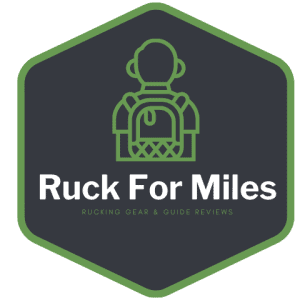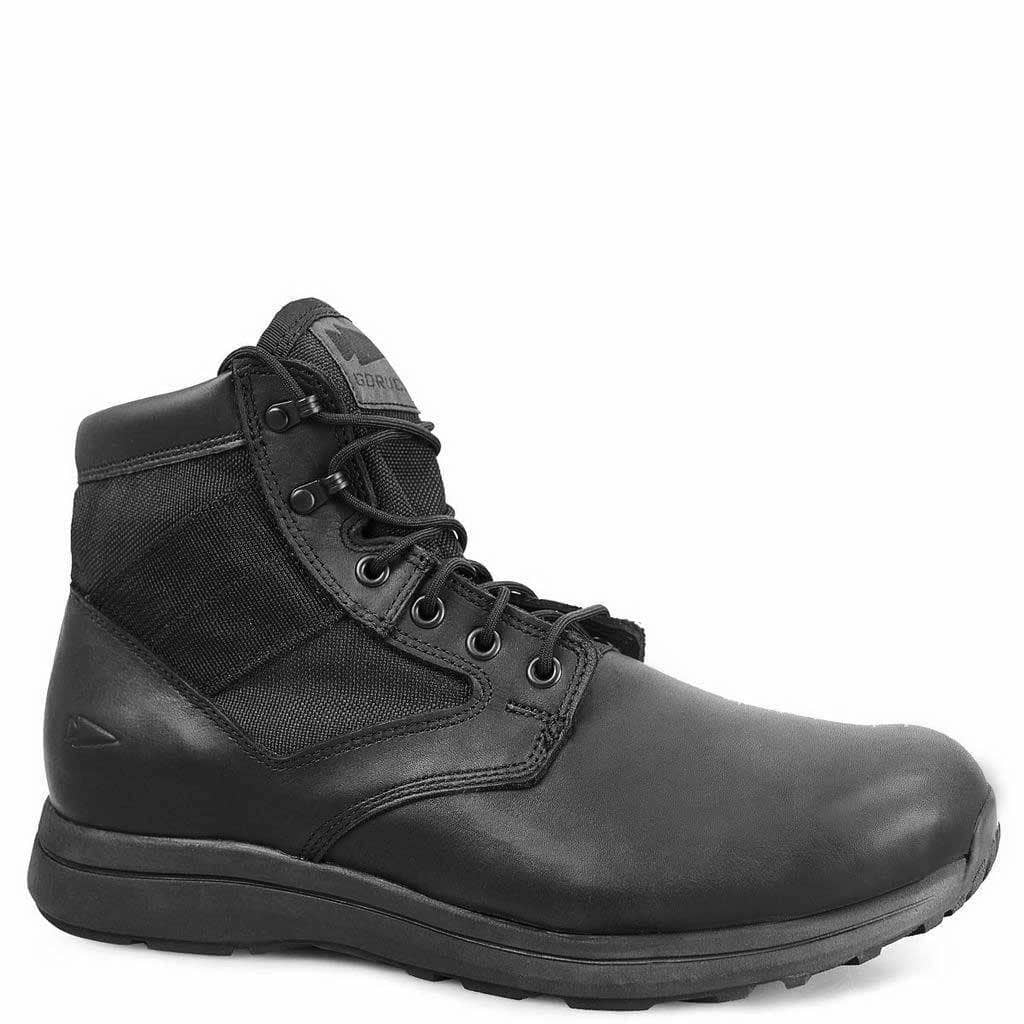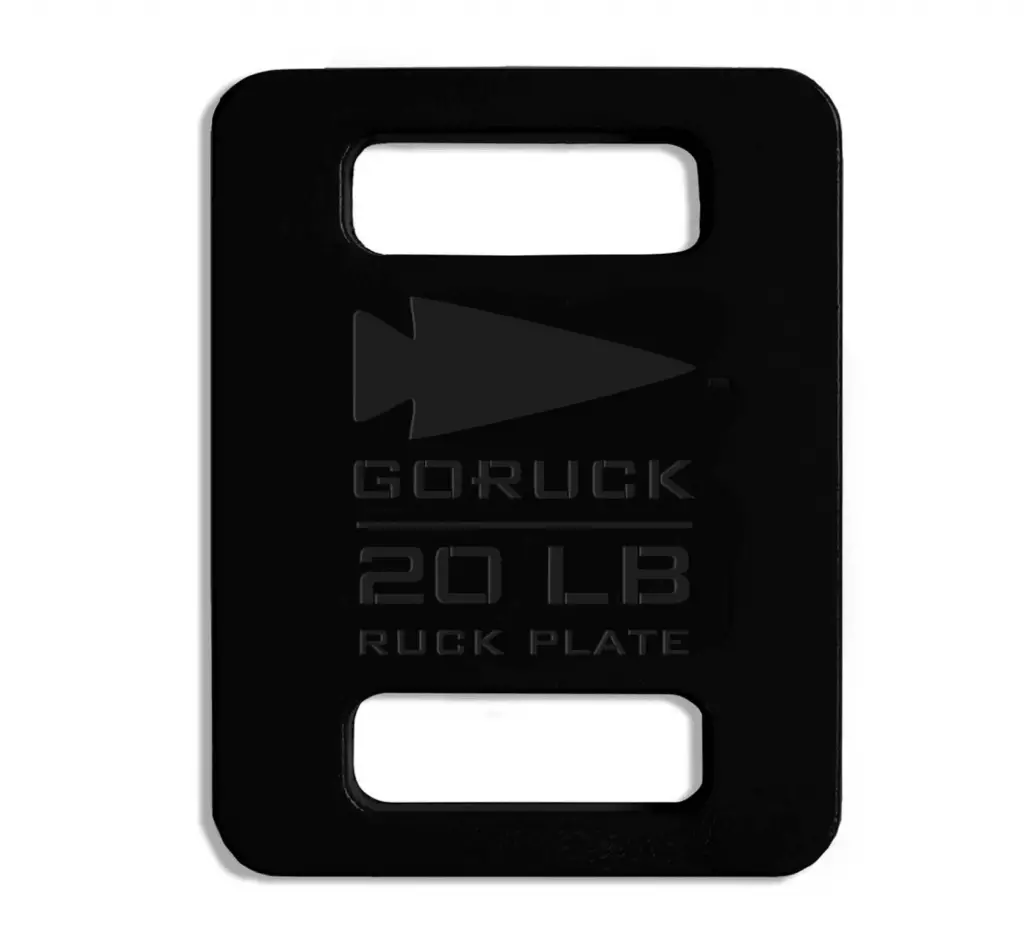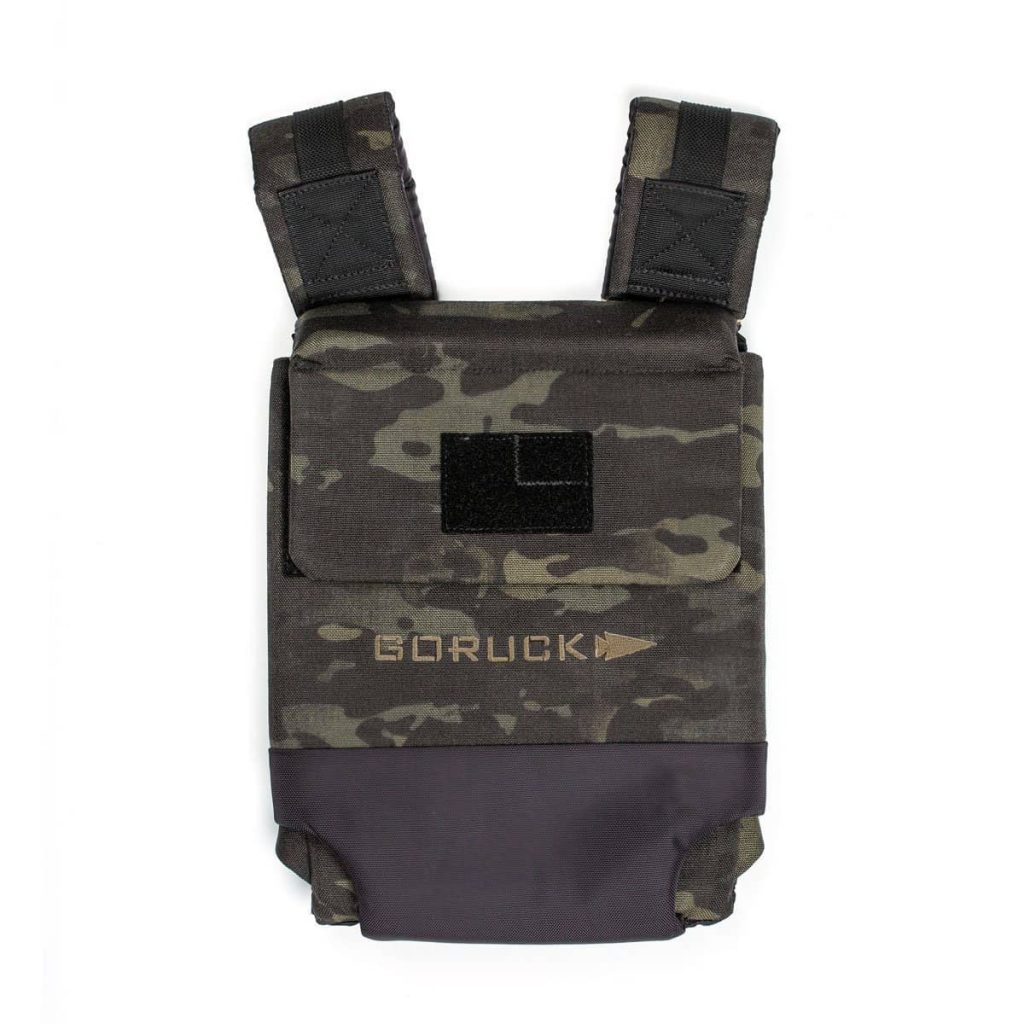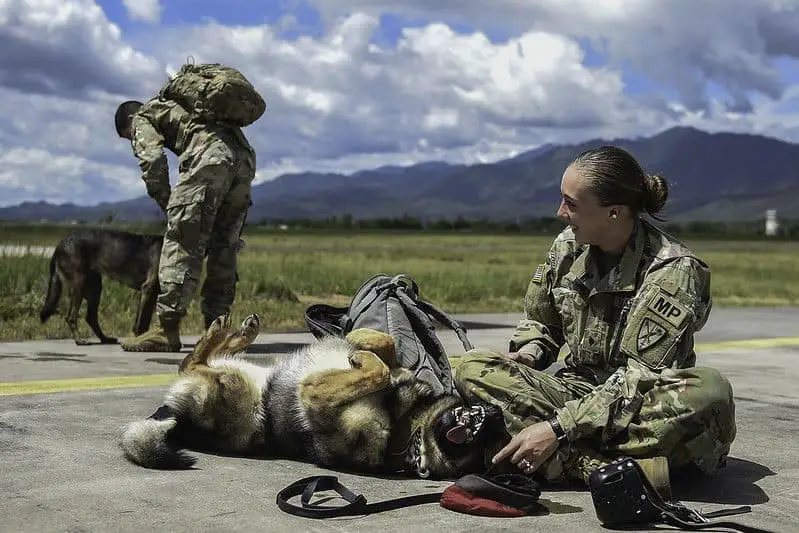
People train for ruck marches mainly for the military, but individuals like myself typically do it recreationally and for ruck competitions like the Tough Ruck or the GORUCK challenge. Whichever ruck event you’re preparing for, It’s not going to be easy. Nevertheless, you are here because you are preparing for an upcoming event or are looking to learn more about how to rucking properly and there is a lot to consider – from packing your rucksack to equipment, speed, posture, and more.
While rucking for the military is certainly different than rucking for civilians, the preparation for both is relatively the same. The tips provided here will help you ruck better. This guide will assist you from start to finish.
Table of Contents:
1. Foot Protection
2. Choose the Right Boots
3. Training
4. Workouts that help you Ruck Better
5. How to Pack a Rucksack
6. Packing Tips
7. Posture while rucking
8. Use a Hip Belt
9. Hydration
10. Nutrition
11. Don’t Stop
12. Speed is not everything
13. Don’t Run
14. Take Care of Blisters
15. Stretch
16. Embrace Different Terrains
17. Listen to Your Body
18. Track your rucks
19. Pack Emergency Essentials for Longer Rucks
20. Wear the Right Clothes
21. Join a Ruck Event or Ruck Club
1. Foot Protection

It’s understandable that most of the focus goes to the back, shoulders, and legs, often overlooking the importance of our feet. Surprisingly, our feet get less ventilation compared to other body parts and tend to sweat more than any other area.
When moisture accumulates on the skin, it creates friction and ups the odds of getting blisters. The issue lies in sweat blocking the pores on your feet. Even though blisters might seem small, they can be pretty painful while you’re out rucking. But it’s not just blisters – your feet can feel discomfort in various ways.
Now, how do you make sure your feet are ready for a ruck march?
So, how do you protect your feet for a ruck march?
- Wear rucking socks made from Merino Wool – great for both cold & hot environments.
- Change socks during ruck
- Use Boot Insoles
- Reduce the weight in your rucksack (if possible)
- Keep your nails short
- Massage your feet – during the ruck to help with inflammation and improve blood circulation
- Always keep your feet dry
If you’re curious about the best boot insoles for ruck marching, we’ve got a post that offers a quick guide on what to consider when picking insoles.
Here’s a full guide on how to avoid blisters ruck march blisters.
2. Choose the Right Boots
No matter what, avoid wearing your brand new boots for a ruck event or a regular military march. Trust me, putting your fresh boots through a long ruck is a surefire recipe for getting some painful blisters. But hey, if you’re absolutely itching to break in those new boots, here’s a workaround: bring along your trusty older pair too. You can switch between the two during the event.
Before you even think about buying new boots, take a pause and consider the weather conditions you’ll be rucking in. Is it dry or wet out there? Hot or cold? You want your boots to be ready for the challenge, so keep these qualities in mind:
- Made from durable material (synthetic suede, Cordura etc)
- Breathable
- Waterproof or Water Resistance
- Properly Fit Boots
Properly fit boots is hard to get right. The United States Army Headquarters released a guide that includes the correct way of ensuring your Boots fit you correctly. This is important because if your boots are too loose, it can cause blisters, abrasions, and calluses. If they are too small, it can cause a lot of pressure and I do not wish that pain on anyone, especially on a long and painful ruck march.
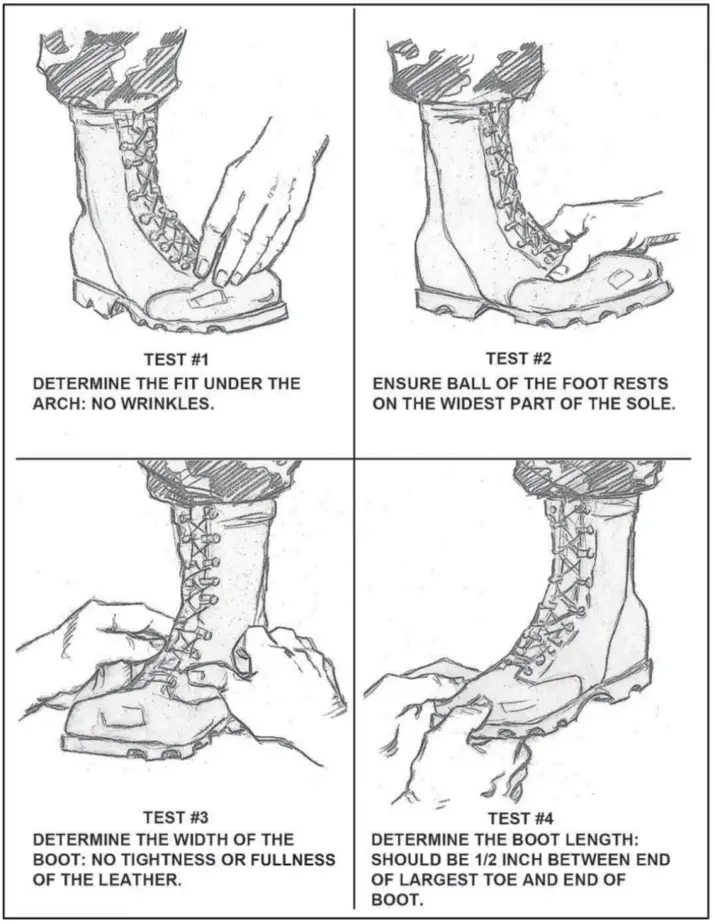
Recommended Casual Rucking Boot
The MACV-1 Coyote Boots is a great choice for regular rucking. These boots are very durable since they’re made from 1,000D Cordura and offers important features which are necessary for rucking such as:
- Ankle support
- Breathability
- Keeps rain and water away from your feet
Learn more about the MACV-1 GORUCK Boots on GORUCK (link to goruck.com)
If you’re still unsure as to which boot is right for you, we reviewed the best rucking boots or check out our recent guide on AR670-1 compliant boots.
3. Ruck March Training
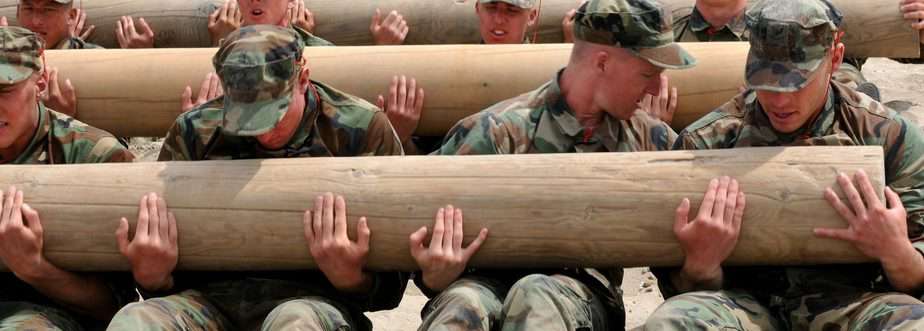
If you’re just stepping into the world of rucking, it’s a smart move to dive into a beginners rucking workout program. That way, you’ll get a sense of what you’re working with, figure out your strengths and areas for improvement, and fine-tune your game plan for the big day.
And for all you military folks out there, gearing up for a string of ruck marches? Start off by considering a fighting load. This load is all about the bare essentials – it’s what soldiers carry in combat. So, here’s the deal: you’ll likely be shouldering about 30% of your bodyweight. Here’s the latest guide according to the US Army.
| Bodyweight of individual (lbs) | Weight (30% of Bodyweight) |
|---|---|
| 160 | 48 lbs |
| 165 | 49.50 lbs |
| 170 | 51 lbs |
| 175 | 52.50 lbs |
| 180 | 54 lbs |
| 185 | 55.50 lbs |
| 190 | 57 lbs |
| 195 | 58.50 |
| 200 | 60 lbs |
| 205 | 61.50 lbs |
| 210 | 63 lbs |
| 215 | 64.50 lbs |
| 220 | 66 lbs |
| 225 | 67.50 lbs |
| 230 | 69 lbs |
Here’s our list of things to put in a rucksack for weight to help with your training. Alternatively you may want to consider a weighted vest for rucking.
Some people prefer to train and level up their rucking game by joining a local ruck club. It’s actually a two-birds-one-stone solution because you’re able to ruck with more experienced folks (who will have great tips for you) while also making connections and meeting more people in your community.
Learn more about ruck clubs and how you can find one near you!
Our Recommended Weight Options For Rucking
1- GORUCK Ruck Plates
Ruck Plates are a great weight choice if your looking add weight to your rucking session and still save space inside your rucksack.
2- Yes4ALL Ruck Plate
3. Ruck Plate Carrier
Instead of carrying a rucksack, you can use this rucksack plate carrier as an efficient way to quickly add weights and resistance to your workout.
This is more focused on training but can be used for your rucking workouts and running (cardio work).
4. Weighted vest
Weighted vest can be a great tool to supplement your rucking training or use it as an alternative to a rucksack if you’re rucking.
Learn more about weighted vests for rucking.
Check out our full guide on rucking plates to better understand what they are and what to consider before choosing a ruck plate.
4. Which Workouts help you Ruck Better?
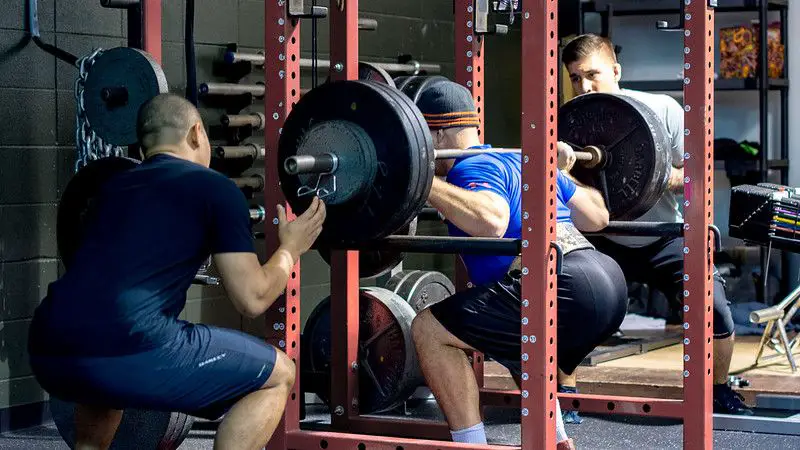
Keep in mind, when you’re out there rucking with the right form (more on that coming up), it’s your legs that are putting in the real work to carry the load. So, if you haven’t exactly been giving your legs much love (believe me, I’ve had my bout of chicken legs), it’s time to consider some hypertrophy workouts. It’s all about getting those leg muscles up to snuff. Solid prep, right?
Now, let’s dive into some workouts that will set you up for success:
- Squats: These are golden for your quadriceps and hamstrings.
- Deadlifts: They’ve got your back, hamstrings, and glutes covered.
- Lunges: These babies work wonders for your leg strength.
- Leg Press Machine: Hop on this machine for a satisfying leg press session.
- Leg Curl: If you’re looking to give your quads and hamstrings special attention, this exercise’s got you.
Need a deeper dive into the best exercises for rucking? I’ve got you covered with an in-depth post on the topic.
5. How to Pack A Rucksack
Packing a rucksack can be such a pain. When I started preparing and training, I just put whatever I could find around me and pack it in my rucksack. This led me to some serious back pain and is clearly not right away to do it. Learn more about how much weight to carry when rucking.
Whether you’re prepping for a competition or for the military. Always pack the heaviest items closer to your back and higher up in the rucksack. This is because placing the heavier items closer to your back is closer to your centre of gravity and allows the load to be distributed more evenly across your body. This prevents strain on your shoulders, back, and neck. Learn how to avoid shoulder pain when rucking.
According to the US Army, packing heavier items higher up in the rucksack and closer to your body reduces energy consumption by 25% as opposed to carrying heavier items lower in the rucksack and away from your body.
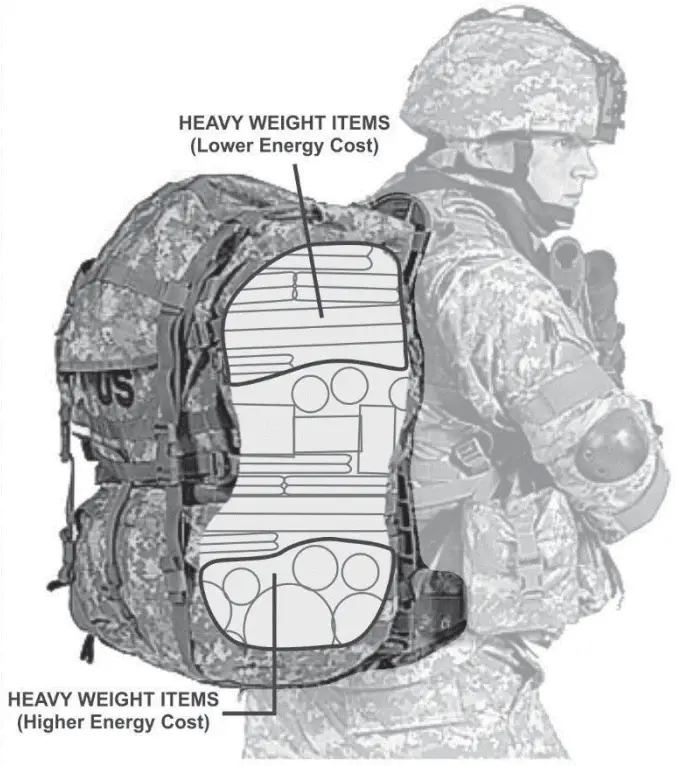
6. Packing Tips – The little things matter the most
It’s the small things that matter, when packing the small hacks will save you time and help preserve your belongings. Here are some tips to follow when packing:
- Use plastic or Ziploc bags to store your clothes. This will come in use when separating your dirty clothes/shoes from the rest of your things. Squeeze out the extra space from the bag to help maximize storage space.
- Use your compartments – The side compartments in your rucksack are there for a reason. Use them to store for their intended purpose. Try to balance both compartments if possible, this will help balance the entire load.
- Place frequently used items on top – Keep in mind that it is best to place heavier items on top of the rucksack.
Not sure if the rucksack you’re looking to buy is big enough? Check out our recent post, is a 65 litre backpack big enough.
7. Posture
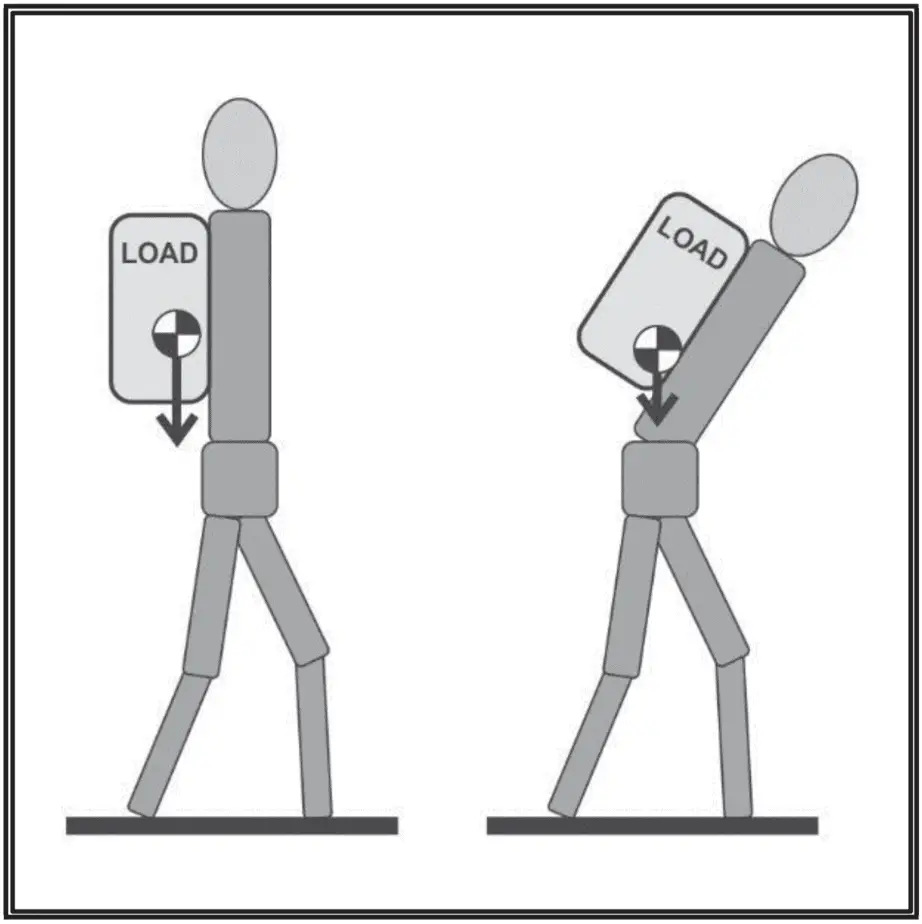
Your posture can significantly amplify the pain you feel if not done properly.
The forward lean, also known as the Trunk Lean, occurs when the weight is too much for your body to handle, leading you to lean forward to balance it out. However, this strategy actually places an immense amount of stress and discomfort on your lower back and abdomen.
To prevent this, ensure that:
- Your back remains straight with your shoulders pulled back.
- Keep the backpack snug against your back.
- Whenever possible, lighten the weight you’re carrying.
8. Hip Belts
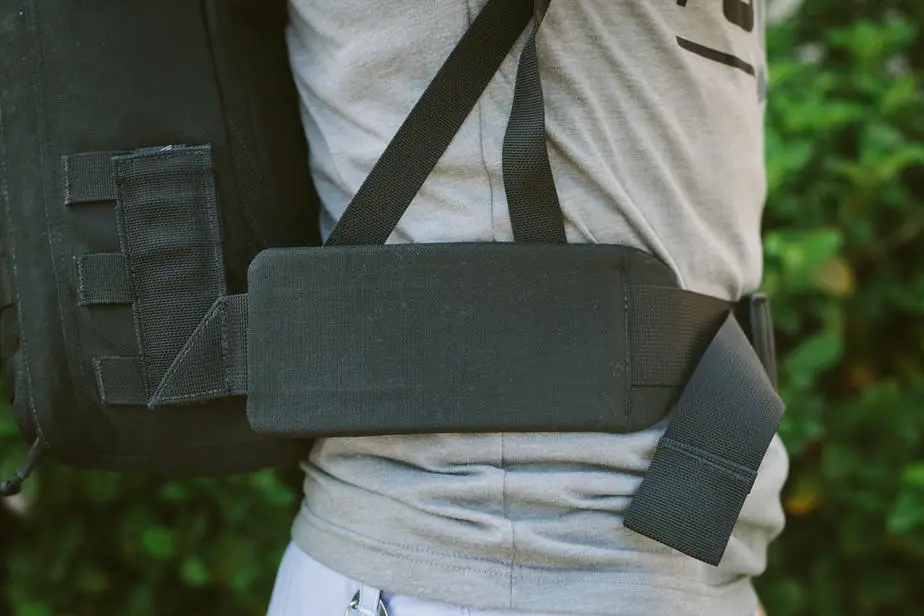
Hip Belts are a true blessing. The purpose of a Hip Belt is to help distribute the weight load evenly across the body. This means that the force and pressure is not solely focused on the shoulders and trapezius muscles.
They also help bring the rucksack closer to your body assisting you with your posture. It transfers the weight solely from your shoulders and traps to your entire body, especially your legs. Hip Belts are great for women as they typically have stronger leg muscles (compared to their upper bodies) and therefore allowing them to carry the weight easier. Learn more about rucking for women here.
Here’s our top recommended rucksacks for rucking which most include a hip belt with the rucksack.
9. Hydration

Its a no brainer that you’re going to be sweating a lot when rucking. This is not solely a muscle building workout, but it’s a cardio workout as well. Rucking consumes a lot of energy and as a result of this you will lost a lot of water and electrolytes .
Drinking water will:
- replenish your electrolytes
- regulate your body temperature
- aid in transporting glucose and oxygen to muscles.
10. Nutrition

Nutrition is of utmost importance in Rucking, as with any other workout. Focusing on macro nutrients is all you really need.
You need Carbohydrates (slow and fast releasing carbs) they provide the body with glucose which is gives you energy. Whole foods are always the best way to go. From fruits and veggies to pasta and rice.
Protein is as important as Carbs. Protein is responsible for recovery and building up your muscle. Those bodybuilders chug down protein for a reason. Through the process of protein synthesis, the protein helps repair damaged tissue sustained during a workout.
Fats come in mainly 4 forms. Trans fat, saturated, Monounsaturated, and Polyunsaturated. Try eating more foods that are from the latter 2 forms, monounsaturated and polyunsaturated. These are fats derived from vegetables, nuts, seeds, and fish. These types of fats are good because they give your body energy and promote the absorption of nutrients and hormones.
Use our rucking calculator to see how many calories you could burn when rucking given your daily caloric intake.
11. Don’t Stop

This is definitely easier said than done. When you’re close to the finish line and have been carrying this heavy rucksack for hours and miles, it can be tempting to just throw it down and stop for a few minutes before getting back to it with a bit more energy.
However, this can actually be counterproductive. If you’re doing a timed competition, as this will add more time to your score. Stopping mid way during your ruck can hinder your overall performance as you will lose momentum.
If need be, slow down and drink water, catch your breath and keep going. Do not sit down! unless necessary of course. It’s going to be a real pain having to put on the heavy rucksack on and strap yourself once you’ve actually sat down and were fully relaxed.
12. It’s Not Always About Speed (Military)
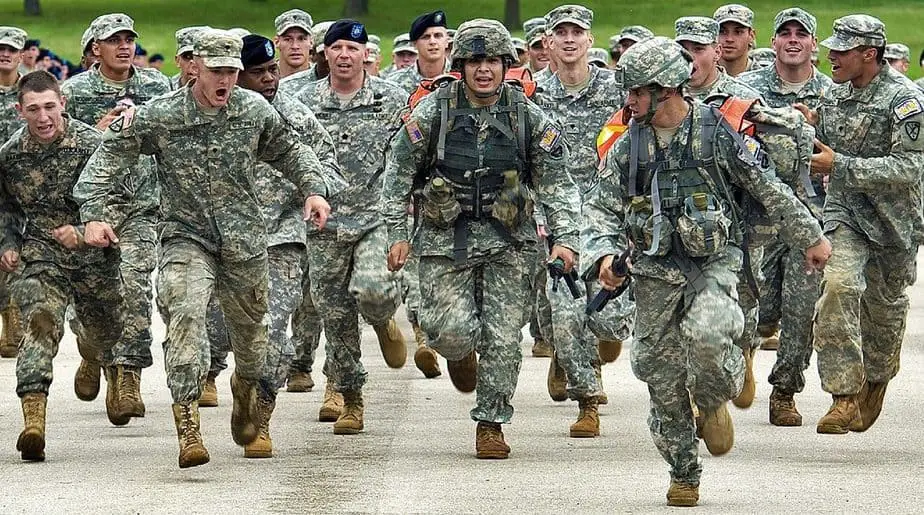
Remember that in the military, speed is not the only thing focused on. March discipline involves paying attention, following instructions, sticking to the formation assigned to you, spacing & distances between elements, and using cover & concealment.
These skills foster teamwork between soldiers of the unit.
Soldiers that were interviewed after completing the toughest ruck march, also known as the Norwegian Ruck March, they said that one of the most important strategies that they implemented was to control their pace and not exert all of their energy in the first couple of miles to make sure they had enough endurance to finish the ruck march.
The same mentality should be applied at any ruck march or rucking session.
13. Don’t Run
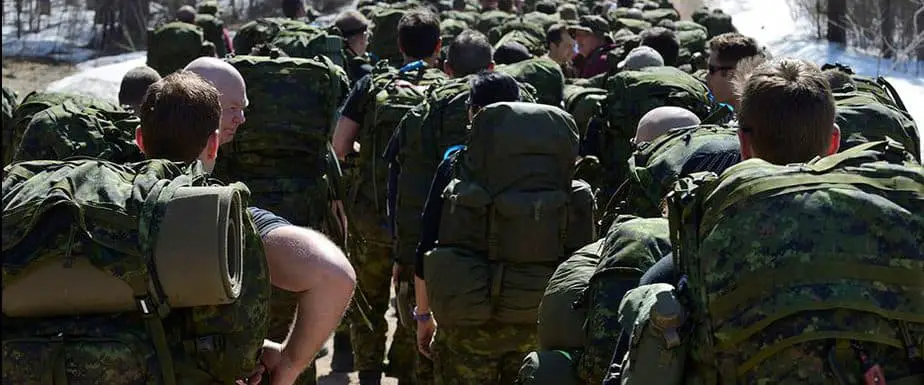
Rucking and running are certainly not a good combination. What may end up happening when you run is having the extremely heavy weight load just smack your back. This is going to hurt and consume much more of your energy than you had anticipated. Remember that it’s more about longevity.
If you’re in a competition and time is essential, consider taking longer strides instead. If you’re going uphill, walk in a zigzag motion to save yourself energy and avoid tiring your legs so quickly. On the other hand, if you’re going down hill bend your knees to absorb the shock.
Learn more about rucking vs running.
14. Take Care of Blisters
These annoying little bubbles occur as a result of constant friction caused by body parts rubbing together or clothes rubbing against you. You can take steps to prevent them, but sometimes they may still pop up. So here’s what to do before and after a ruck to take care of blisters.
Before Rucking:
- Apply Bandage or Band air to sensitive areas
- Wear moisture-wicking socks (i.e Merino Wool)
- Apply Powder or petroleum Jelly (like vaseline)
After Rucking:
- Cover the blister loosely with a band aid
- Padding – if the blister is on the bottom of your foot or on your heel, cut the padding into a donut shape with a whole in the middle and place that around the affected area.
- Keep area clean & covered
- Avoid popping it.
Check out our full guide on how to prevent ruck march blisters.
15. Stretch
When your body is under stress, it naturally produces lactic acid which results in soreness and fatigue. Stretching eliminates the lactic acid build up and relaxes the muscle.
Stretching also improves blood circulation and range of motion, and prevents pain after a workout (i.e DOMS (Delayed onset muscle soreness). Learn more about what you should do before and after rucking.
16. Embrace Different Terrains
Incorporating different terrains like hills, trails, and uneven surfaces replicates the challenges you might encounter in real-life situations. Whether you’re hiking in nature, navigating urban environments, or facing rugged landscapes, training on varied terrains prepares you for these scenarios.
Engage Different Muscle Groups: Rucking on flat surfaces predominantly engages your leg muscles and cardiovascular system. However, when you tackle hills or uneven terrain, you activate a broader range of muscle groups. Uphill rucking requires more effort from your quads, calves, and glutes, while downhill sections engage your stabilizing muscles and provide eccentric training for better muscle control.
Improved Balance and Stability: Uneven surfaces demand enhanced balance and stability. Negotiating rocks, roots, and other obstacles challenges your core muscles and smaller stabilizing muscles. Over time, this leads to improved proprioception (awareness of your body’s position) and reduces the risk of falls or injuries.
Enhanced Cardiovascular Fitness: Hills and varying terrain introduce interval-like training, where you alternate between intense uphill segments and easier downhill or flat stretches. This variation boosts your heart rate, improving cardiovascular fitness and endurance. The change in intensity also provides a higher calorie burn.
From personal experience, if I’m in a state where I need to burn more calories from my rucking sessions, I tend to take routes that I know have uphills. While I do find that this slows down my pace as my heart rate does climb up, my total calories does climb up.
Rucking Uphill – Heart Rate vs Pace
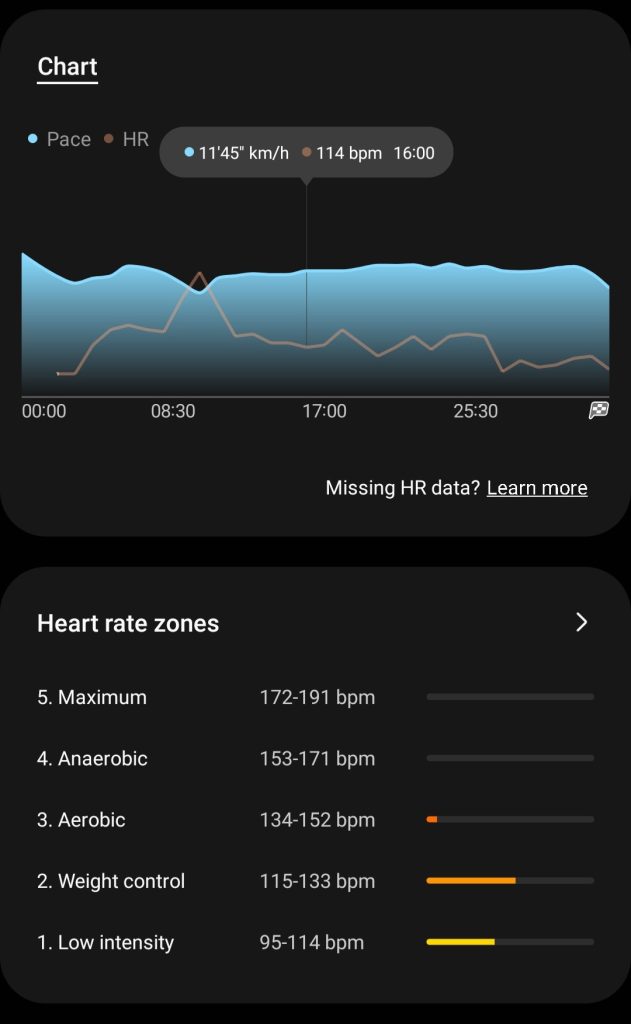
As per my tracked workout above, I chose a route that had a relatively slight uphill. As you can tell, my rucking pace did decline towards the 08:30 mark, however my heart rate did climb up. My rucking pace did clumb back up as soon as my terrain and surface was flat.
The majority of my rucking session was in Zone 2, that is best optimized for fat loss.
17. Listen to Your Body
Rucking is a physically demanding activity that places stress on your muscles, joints, and cardiovascular system. It’s crucial to pay close attention to your body’s signals during rucking to ensure your safety, prevent injuries, and optimize your training. Here’s why listening to your body is so important:
Early Warning Signs – Discomfort, pain, or unusual fatigue are your body’s way of signaling that something might be wrong. These sensations could indicate issues with your gear, your technique, or even potential injuries in the making. Ignoring these signs can worsen the situation.
Injury Prevention: Pushing through pain or discomfort can lead to overuse injuries, strains, or even more severe injuries. For instance, if you feel a sharp pain in a joint, continuing to ruck might exacerbate the problem and lead to longer recovery times.
Learn more about common rucking injuries and how to prevent them.
Gear Adjustments: Discomfort might be caused by poorly adjusted gear, such as a backpack that’s not fitted properly or rubbing against your skin. Taking the time to adjust your gear, like tightening straps or repositioning your rucksack, can make a significant difference in your comfort and overall experience. Distributing the weight in your rucksack can make a huge difference. Try using a ruck plate if you have one and make sure that it’s placed closest to your back.
Avoiding Overexertion/Over Training: If you feel excessively fatigued or overwhelmed during a ruck, it’s important to acknowledge your limits. Pushing through when your body is exhausted can lead to physical and mental burnout. Taking breaks and knowing when to stop prevents overexertion and promotes gradual improvement.
6. Long-term Progression: Injuries resulting from ignoring your body’s signals can set back your progress significantly. By prioritizing your body’s comfort and health, you’re setting the stage for consistent, sustainable, and long-term progress in your rucking journey.
I’ve been there myself and let me tell you, this is a mistake you definitely want to sidestep. Trust me, paying heed to your body can save you from long-term injuries. Let me share a personal experience – I was juggling soccer games and rucking sessions at one point. While I was in the mode of shedding some pounds, I had it in my head that I should be pushing myself constantly and minimizing those precious rest days.
Well, it eventually caught up with me. After a soccer-related injury that gave my right knee a hard time, I made the misguided decision to tough it out during a rucking session. Why? Simply because I didn’t want to “lose the momentum.” And let me tell you, that decision ended up being far from smart.
But guess what? This plan totally backfired. During one uphill ruck session, I began experiencing intense sharp pain. I tried to push through for around 20 minutes, but the pain became unbearable. To cut it short, I ended up in a situation where I couldn’t play soccer or ruck for roughly a month and a half. By the time my knee had finally healed, I was noticeably out of shape. Looking back, taking a mere week off to let my knee recover would have been a far smarter move. It would’ve allowed me to keep up with both soccer and rucking without enduring any pain.
Remember that everyone’s body responds differently to exercise. What might be discomfort for one person could be an early sign of injury for another. Tune in to your body’s unique signals and tailor your approach accordingly.
18. Track Your Rucks
Tracking your ruck workouts is important for several reasons as it provides valuable insights into your progress, helps you set goals, and ensures that your training remains effective and well-structured. Here’s why tracking your ruck workouts matters:
Progress Monitoring
Tracking your ruck workouts allows you to see how you’re improving over time. You can measure factors like distance covered, weight carried, pace, and completion times. Seeing improvements can be incredibly motivating and reinforce your commitment to rucking.
Personally, I find that when i’m trying to keep my heart rate in Zone 2 during my rucks, I heavily rely on tracking my workouts on Samsung Health as it gives me clear insights into my heart rate zones and what percentage of my workout was in zone 2.
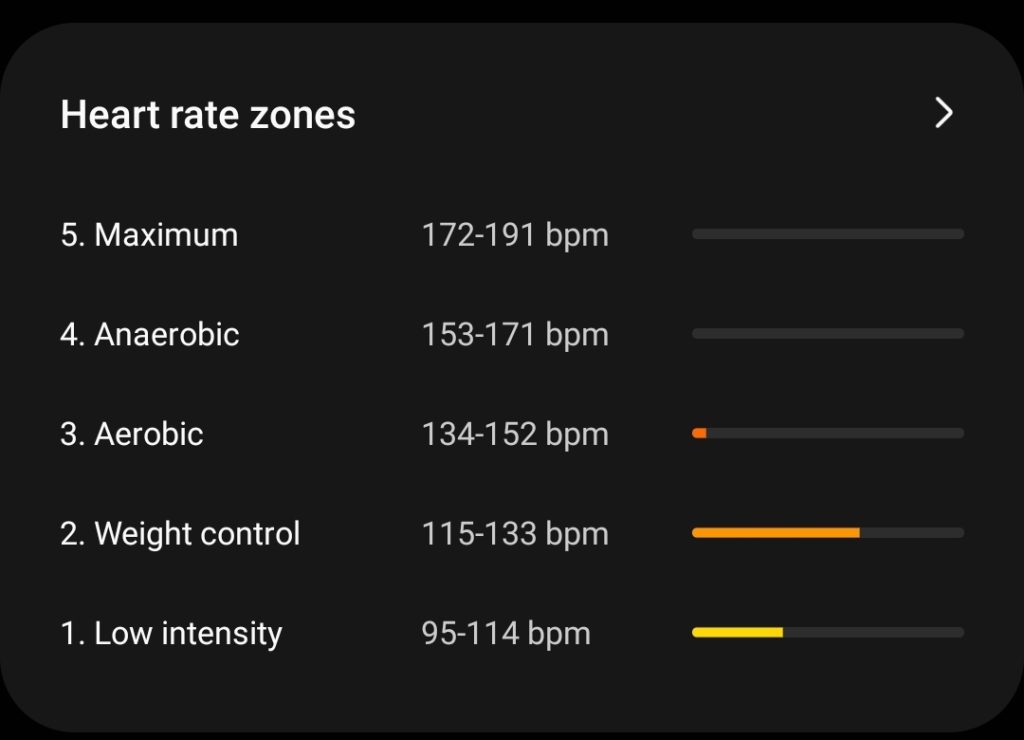
In the example below, you can tell that the majority of this ruck was in Zone 2.
Identify Patterns in your Rucks
Recording your ruck workouts helps you identify patterns in your performance. You might notice trends in terms of which terrains or distances challenge you the most. This information can guide your training adjustments and strategies.
Documentations Keeps You Motivated
Keeping a log of your accomplishments and improvements can boost your self-confidence and mental well-being. It serves as a positive reinforcement and reminds you of the progress you’ve made.
Over time, your workout log becomes a documentation of your rucking journey. Looking back at where you started and how far you’ve come can inspire you to keep pushing forward, especially during times when motivation is low.
19. Pack Emergency Essentials for Longer Rucks
When you’re getting ready for a ruck, the first thing you want to think about is staying safe and ready for anything. Having emergency essentials with you can really come in handy when unexpected things pop up.
It’s all about making sure you’re well-equipped to handle challenges and stay on the safe side.
Sometimes a rucking session can take longer than initially anticipated. Unplanned detours, difficult terrain, or even fatigue might slow you down. Having essential items ensures that you’re not caught unprepared if your ruck lasts longer than expected.
Consider the following to keep yourself safe:
- Basic Medical Care: A first aid kit addresses minor injuries and discomfort.
- Multi-tool Versatility: A multi-tool helps with repairs and various tasks.
- Visibility in the Dark: A headlamp provides illumination during low-light situations.
20. Wear the Right Clothes
Wearing the right clothes while rucking is a key factor in ensuring an enjoyable and bearable experience. It’s about more than just looking the part – it directly impacts your comfort, performance, and overall well-being during the activity.
Comfort
The right clothes are like your comfy couch during a ruck. Imagine walking with your gear, the last thing you want is stuff that doesn’t fit right or rubs you the wrong way. Think of clothes that are like your wingman, they’re supposed to be preventing chafing, irritation, and all that annoying discomfort while you move.
Temperature Regulation
You know how weather can go from sunny to cloudy in a blink, right? Well, the right clothes are like your weather app. Layering up helps you be ready for those surprises.
21. Join a Ruck Event or Ruck Club
Think of a ruck event or ruck club as a party. You’re not just rucking, you’re exploring new areas and routes, while meeting new people and making new connections.
Personally, I found it to be rather lonely to ruck on my own the entire time. Here are some benefits of joining a ruck event (that also applies to ruck clubs)
- Learning – I found that a lot of the tips on this list and things that I learned along the way came from ruckers that were much more experienced than me.
- Motivation – On the days that I felt lazy to workout and just wanted to sit in and watch Netflix, having made promises to new friends that I met during those events got me off the couch and rucking.
- Keeps me on my toes – When rucking with people, I find myself pushing through those last kilometers that I would have perhaps missed out on had I rucked on my own.
